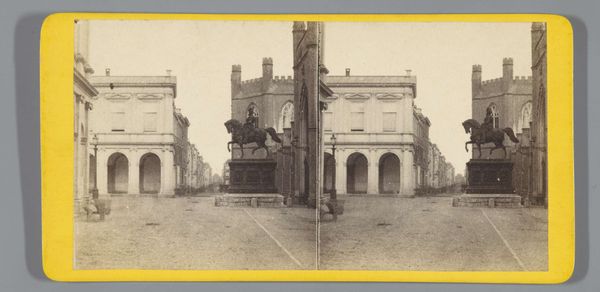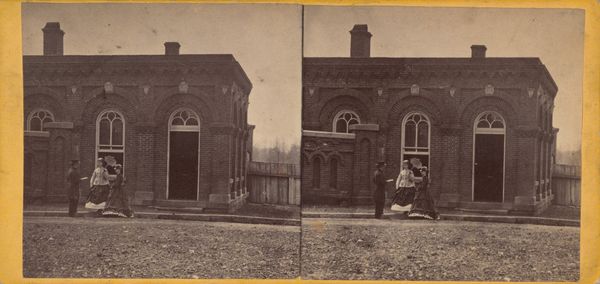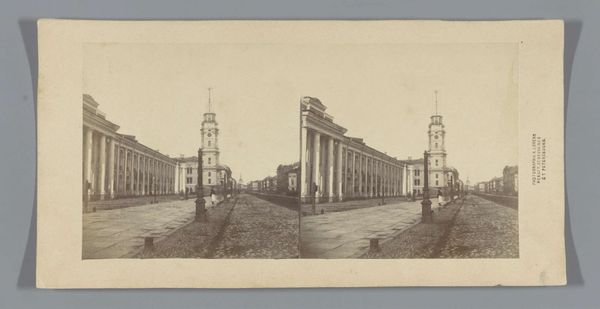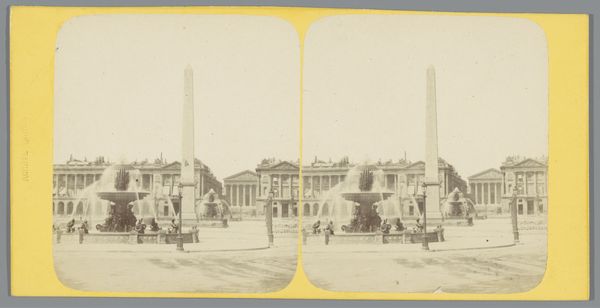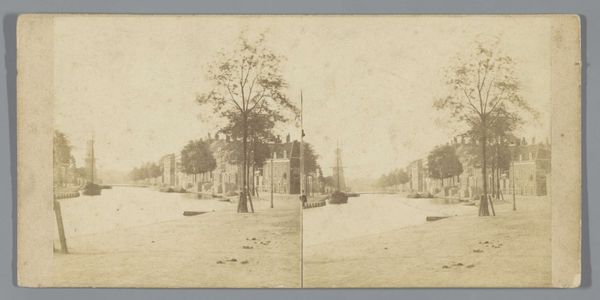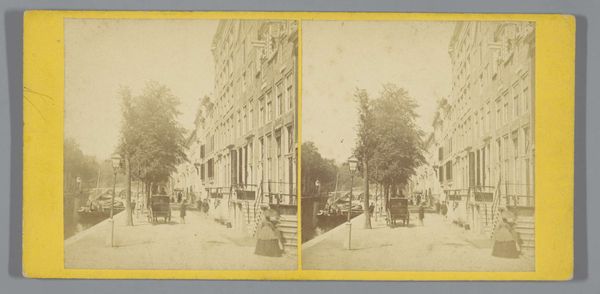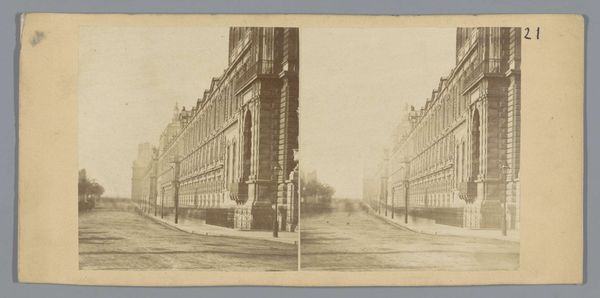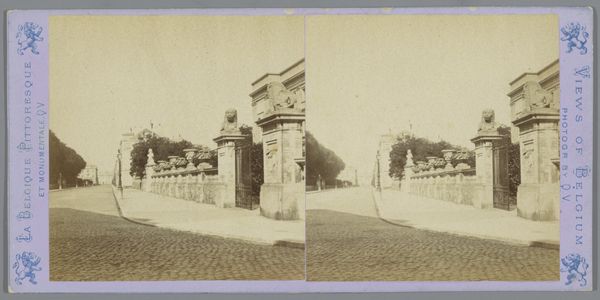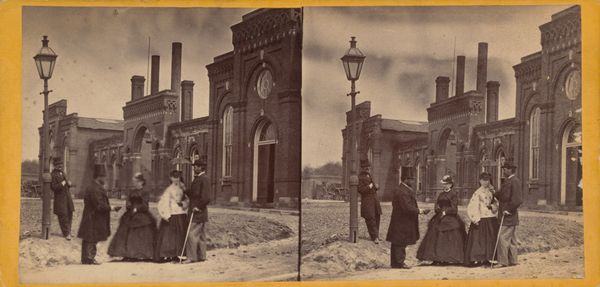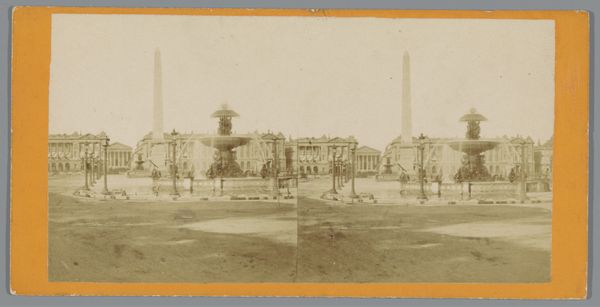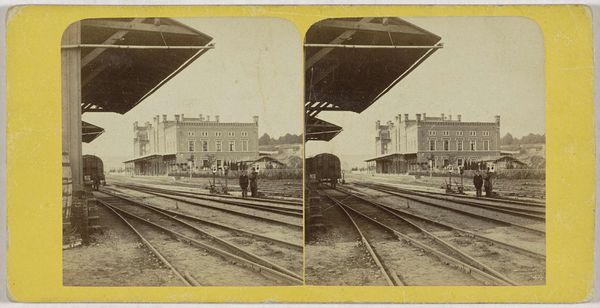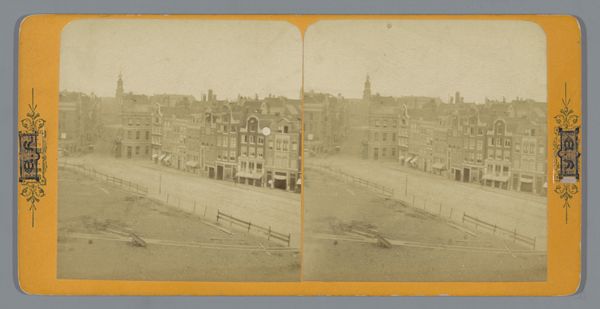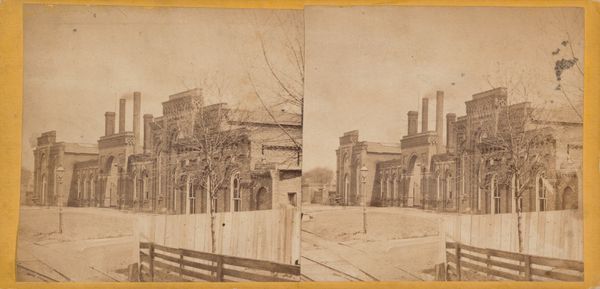
Fire Department, Clark & Sumner, Standard Petroleum Refinery, Pittsburg, Pennsylvania c. 1865
0:00
0:00
photography, gelatin-silver-print
#
photography
#
photojournalism
#
gelatin-silver-print
#
cityscape
#
realism
Dimensions: image/sheet: 7.6 × 8 cm (3 × 3 1/8 in.) image/sheet: 7.6 × 8 cm (3 × 3 1/8 in.) mount: 8.1 × 17 cm (3 3/16 × 6 11/16 in.)
Copyright: National Gallery of Art: CC0 1.0
Editor: This photograph, “Fire Department, Clark & Sumner, Standard Petroleum Refinery, Pittsburg, Pennsylvania," was taken around 1865 by Thomas H. Johnson and printed as a gelatin-silver print. I’m struck by how matter-of-fact it is. What draws your eye when you look at this image? Curator: I see a fascinating interplay between industrialization, labor, and the nascent technologies of the 19th century. Look at the meticulous depiction of the fire department building. It isn’t just documentation; it’s celebrating the bricks, the mortar, the sheer materiality of this new, efficient industrial age. Editor: So you're saying it’s less about the fire department itself, and more about the *stuff* it's made of? Curator: Precisely! Consider the placement of the fire engine – a symbol of innovation but also manual labor. The photo is concerned with how industrial progress reshaped not just the physical landscape, but the socio-economic structure through labor opportunities and risks such as refinery fires. What does the “Standard Petroleum Refinery” promise or suggest? Editor: It was meant to create a better, more standardised type of fuel. The building is actually placed on an artificial stage where its materials are given more visibility by virtue of photography itself, which is also new material practice… So, are we witnessing the intersection of industrial materiality, working labor, and new possibilities brought by chemical science? Curator: Absolutely! And think about the act of photography itself as a chemical and industrial process. This photograph becomes a document *of* production, but also a product *of* it. It is material through and through. It highlights how crucial visibility through these "gelatin-silver prints" of industrial and scientific improvements were, in those days. Editor: I hadn’t thought about it that way – seeing the photograph itself as part of the larger industrial context. Thanks! Curator: Indeed. The materials and process, whether it is photographic materials and processes or the labor of manufacturing safer petroleums is essential to this piece.
Comments
No comments
Be the first to comment and join the conversation on the ultimate creative platform.
